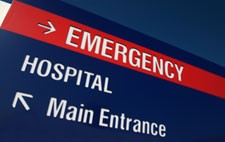Most people enter the hospital expecting to get better. However, there are real risks during hospitalization that can sometimes leave people sicker or, even worse, dead. Several years ago, Dr. Leana Wen published an article highlighting the ten most common medical errors that can occur during a hospital stay. We thought her list was spot-on; and we wanted to share it here.
From misdiagnosis to ‘never-events’ to going home too soon, here are the top ten medical errors during hospitalization:
The following list is from an online blog published by Leana Wen, M.D. – Psychology Today, 3/26/2013.
#1 Misdiagnosis.
The most common type of medical error is error in diagnosis. The right diagnosis is the key to your entire medical error. A wrong diagnosis can result in delay in treatment, sometimes with deadly consequences. Not receiving a diagnosis can be dangerous too; this is why it’s so important to aim to figure out what a patient has, not just a list of things they don’t have.
#2 Unnecessary treatment.
Patient advocate Patty Skolnik founded Citizens for Patient Safety after her then-healthy, 22-year old son underwent brain surgery that left him partially paralyzed and unable to speak. He fought for his life for two years before succumbing to multiple infections. His story is incredibly tragic—especially since his surgery was never needed in the first place. Like Michael, thousands of people receive unnecessary treatment that cost them their lives.
#3 Unnecessary tests and deadly procedures.
Studies show that $700 billion is spent every year on unnecessary tests and treatments. Not only is this costly, it can also be deadly. CT scans increase your lifetime risk of cancer, and dyes from CTs and MRIs can cause kidney failure. Even a simple blood draw can result in infection. This is not to say that you should never have a test done; only to be aware that there are risks involved, and to always ask why a test or procedure is needed.
#4 Medication mistakes.
Over 60% of hospitalized patients miss their regular medication while they are in the hospital. On average, 6.8 medications are left out per patient. Wrong medications are given to patients; a 2006 Institute of Medicine report estimated that medication error injure 1.5 million Americans every year at a cost of $3.5 billion.
#5 “Never events”.
Virtually everyone has heard the story of operating on wrong limb or the wrong patient. There are more horror stories. Food meant to go into stomach tubes go into chest tubes, resulting in severe infections. Air bubbles go into IV catheters, resulting in strokes. Sponges, wipes, and even scissors are left in people’s bodies after surgery. These are all “never events”, meaning that they should never happen, but they do, often with deadly consequences.
#6 Uncoordinated care.
In our changing healthcare system, the idea of having “your” doctor is becoming a relic of the past. If you’re going to the hospital, chances are you won’t be taken care of by your regular doctor, but by the doctor on call. You’ll probably see several specialists, who scribble notes in charts but rarely coordinate with each other. You may end up with two of the same tests, or medications that interfere with each other. There could be lack of coordination between your doctor and your nurse, which can also result in confusion and medical error.
#7 Infections.
Infections, from the hospital to the patient. According to the Centers for Disease Control, hospital-acquired infections affect 1.7 million people every year. These include pneumonias, infections around the site of surgery, urinary infections from catheters, and bloodstream infections from IVs. Such infections often involve bacteria that are resistant to many antibiotics, and can be deadly (the CDC estimates nearly 100,000 deaths due to infections every year), especially to those with weakened immune systems.
#8 Not-so-accidental “accidents”.
Every year, 500,000 patients fall while in the hospital. As many “accidents” occur due to malfunctioning medical devices. Defibrillators don’t shock; hip implants stop working; pacemaker wires break. There are protocols and safeguards to prevent these problems from happening, but even if they happen for 1 in 100 people, do you want to be that one person who experiences the “accident”?
#9 Missed warning signs.
When patients get worse, there is usually a period of minutes to hours where there are warning signs. They may feel worse, and there are often changes in heart rate, blood pressure, and other measurements. Unfortunately, these warning signs are frequently missed, so by the time they are finally noticed, there could be irreversible damage.
#10 Going home—not so fast.
Studies show that 1 in 5 Medicare patients return to the hospital within 30 days of discharge from the hospital. This could be due to patients being discharged before they are ready, without understanding their discharge information, without adequate follow-up, or if there are complications with their care. The transition from hospital to home is one of the most vulnerable times, and miscommunication and misunderstanding can kill you after you get home from the hospital too.
Dr. Wen currently serves as the Director of Patient-Centered Care Research, Attending Physician in the Department of Emergency Medicine, and Assistant Professor of Health Policy in the Milken School of Public Health, at George Washington University.

Proving medical negligence on the part of a nurse, physician or hospital is very difficult. It takes an experienced personal injury attorney with the right background knowledge to navigate complex medical error claims.
If you or a loved one have been injured due to a medical error, contact the attorneys at Casey, Devoti & Brockland. Matt Casey, Matt Devoti and Anne Brockland have handled hundreds of medical malpractice claims and are happy to meet with you to discuss your individual circumstance. They can determine if you have a viable claim for negligence and help you navigate the road to recovery and compensation. To schedule a free, no-obligation consultation, call our office today: (314) 421-0763.









